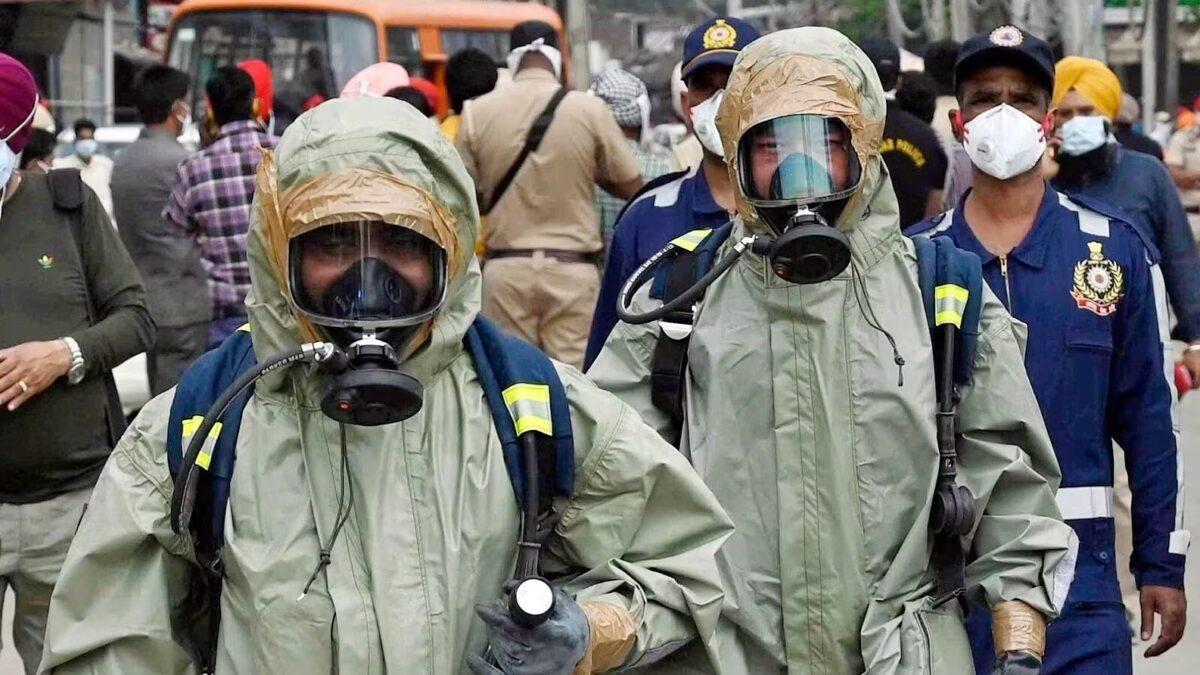Late on Tuesday night, a fertilizer plant in North Chennai’s Ennore area experienced an ammonia gas leak, leading to the hospitalization of around 50 people. The incident has raised concerns about the safety protocols in place and the potential environmental impact of such leaks.
The Incident
- The gas leak occurred from an underwater pipeline that runs from the sea to the fertilizer manufacturing facility of Coromandel International Limited.
- The company, a part of the Murugappa Group, promptly depressurized the pipeline, completing the operation within 20 minutes.
- However, the damage was already done, with a large number of people in the vicinity complaining of breathlessness and skin irritation.
Health Impact
- Tamil Nadu’s health minister, M Subramanian, disclosed that more than a hundred individuals were impacted, with approximately 50 requiring hospitalization. Fortunately, all patients are currently in stable condition.
- The affected individuals experienced symptoms such as breathlessness, burning in their eyes, throat, nose, and chest.
- The Tamil Nadu Pollution Control Board (TNPCB) stated that the level of ammonia in the air was alarmingly high at 2,090 micrograms per cubic meter, far above the accepted level of 400 micrograms.
Environmental Consequences
- Apart from the immediate health concerns, the ammonia leak has raised worries about its impact on the environment.
- The TNPCB reported elevated levels of ammonia in the sea, reaching 49 milligrams per liter (mg/l) compared to the standard of 5 mg/l.
- The southern bench of the National Green Tribunal has taken suo moto cognizance and directed the TNPCB to file a report, with a hearing scheduled for January 2, 2024.
Public Outcry and Protests
- In the aftermath of the incident, local residents expressed anger and concern, demanding the immediate closure of the factory.
- Protesters claimed that they were not warned about the gas leak, leading to a sudden onset of health issues. The lack of timely information exacerbated the situation, causing distress among the affected population.
Long-term Impact and Ecosystem Effects
- Prabhakaran Veeraarasu, an environment engineer from the NGO Poovulagin Nanbargal, highlighted the potential long-term consequences of ammonia exposure.
- He mentioned that while the immediate effects were evident, prolonged exposure could affect the lungs and kidneys.
- Additionally, the marine ecosystem has been impacted, with reports of dead fish in the sea due to the transformation of ammonia into ammonia hydroxide.
Factory Operations and Safety Measures
- The Coromandel International Limited, in a statement, explained that the incident was identified during routine operations.
- The company activated its Standard Operating Procedure, isolating the ammonia system facility and restoring normalcy promptly.
- The statement emphasized the company’s adherence to high safety standards and an efficient emergency response system.
Questions Related to Exams
Q: What caused the ammonia gas leak in the fertilizer plant in Ennore?
A: The gas leak in Ennore occurred from an underwater pipeline that runs from the sea to the fertilizer manufacturing facility of Coromandel International Limited.
Q: What were the symptoms experienced by those affected by the gas leak?
A: People in the affected area complained of symptoms such as breathlessness, skin irritation, burning in the eyes, throat, nose, and chest.
Q: What were the immediate actions taken by the fertilizer plant in response to the gas leak?
A: The company, Coromandel International Limited, promptly depressurized the pipeline, completing the operation within 20 minutes to contain the leak.
Q: What were the levels of ammonia reported by the Tamil Nadu Pollution Control Board (TNPCB) in the air and sea?
A: The TNPCB reported ammonia levels in the air at 2,090 micrograms per cubic meter, well above the accepted level of 400 micrograms. In the sea, it was 49 milligrams per liter (mg/l) compared to the standard of 5 mg/l.
Q: How has the ammonia leak affected the marine ecosystem?
A: Ammonia in the water has reportedly led to the formation of ammonia hydroxide, impacting the marine ecosystem. Fishermen have reported several dead fish in the sea.


 Telangana Launches TB-Free Model: Projec...
Telangana Launches TB-Free Model: Projec...
 Bihar Passes Anti-Paper Leak Bill to Com...
Bihar Passes Anti-Paper Leak Bill to Com...
 NTPC Vidyut Vyapar Nigam Ltd. To Set Up ...
NTPC Vidyut Vyapar Nigam Ltd. To Set Up ...
